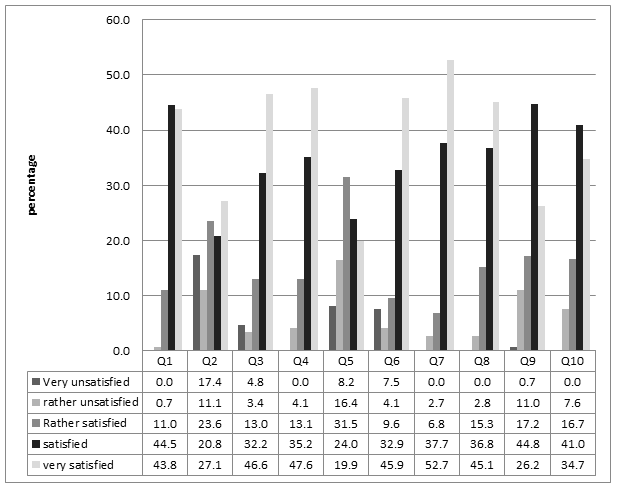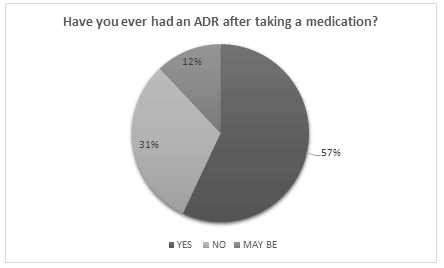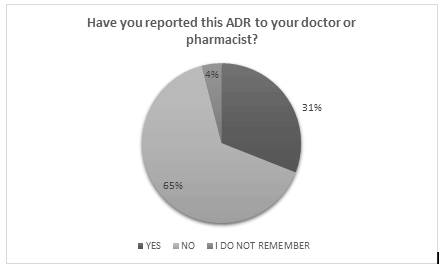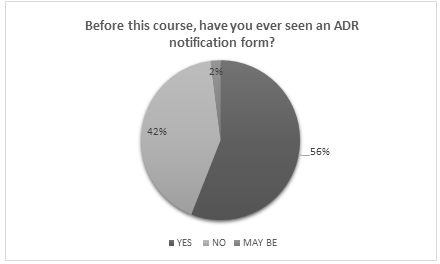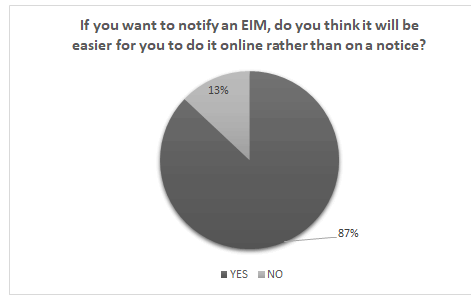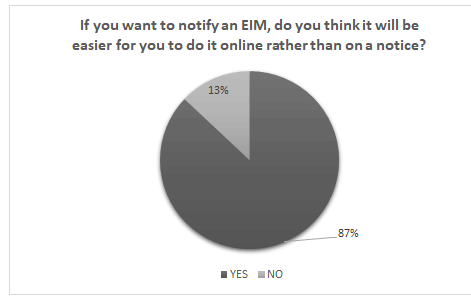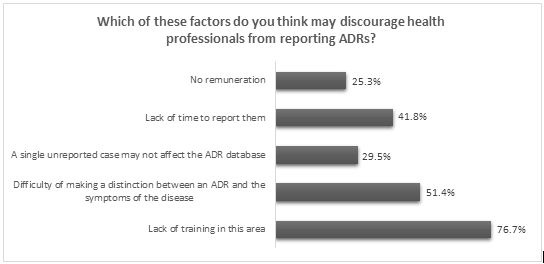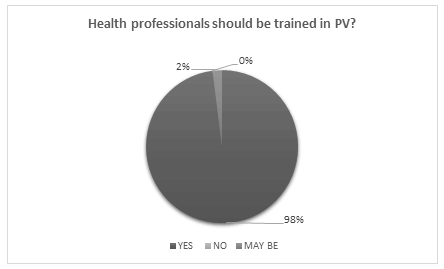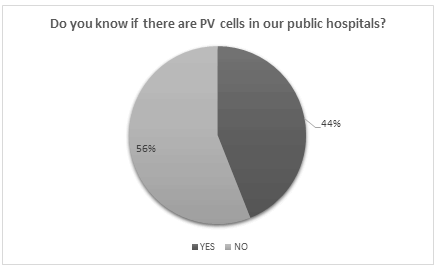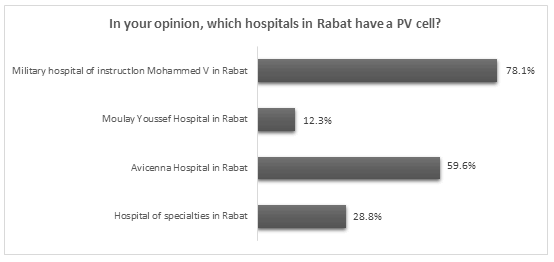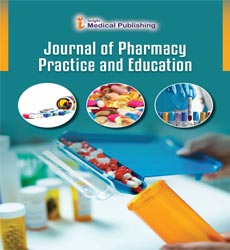The Reverse Class: A New Learning Model Applied To the Teaching of Pharmacovigilance at the Faculty of Medicine and Pharmacy-University Mohammed V Rabat-Morocco
Samira Serragui1, Zineb Lachhab*1, Rim El Aissaoui1, Yahia Cherrah1
Department of Pharmacology and Toxicology - Faculty of Medicine and Pharmacy - University Mohammed V – Rabat, Morocco
- *Corresponding Author:
- Zineb Lachhab
Department of Pharmacology and Toxicology - Faculty of Medicine and Pharmacy - University Mohammed V – Rabat, Morocco
Tel: 2.12615E+11
E-mail:zineblachhabpharma@gmail.com
Received Date: June 23, 2021; Accepted Date: October 9, 2021; Published Date: October 19, 2021
Citation: Serragui S, Lachhab Z, Aissaoui E R, Cherrah Y, (2021) The Reverse Class: A New Learning Model Applied To The Teaching of Pharmacovigilance at The Faculty of Medicine and Pharmacy-University Mohammed V Rabat-Morocco J Pharma Prac Edu Vol:4 No:5
Abstract
The reverse class is a new teaching method that offers teachers the opportunity to design their courses in such a way to improve the willingness and desire of students to participate and become the main actors in the learning process.
In this study, the teaching and research unit in pharmacovigilance in the pharmacology and toxicology laboratory in the Faculty of Medicine and Pharmacy, Mohammed V University of Rabat, has set up the reverse class for teaching two chapters of pharmacology: adverse drug reactions (ADR) and pharmacovigilance (PV) for the benefit of students from the 3rd and 4th year of the pharmacy section for the 2018-2019 academic year.
146 students participated in this survey. 43.8% and 44.5% of students said respectively that they were very satisfied or satisfied with this new teaching method. 71.5% of students think that these online courses could replace the lectures. 97.2% were satisfied with the shared video sequences and the clarity of their content. 57% of students reported having had an ADR, only 31% reported this ADR to their attending physician or pharmacist. 84% have already read an article on ADRs, and only 56%haveseenanADRnotificationform.Afterthecourses,92%confirmedthattheywillstarttonotifyADRs.and 98% confirmed the need to train health professionals in PV.
The study showed that the reverse classroom is an innovative and effective teaching method for Moroccan pharmacy students with a fairly high satisfaction rate.
Introduction
Recently, educational innovations in technology and pedagogy have developed. Compared to the classic teaching method in the form of lectures, the new methods offer teachers the opportunity to design their courses in such a way to improve the willingness and desire of students to participate and become the main actors in the learning process. Indeed, various studies have shown that during a lecture, students' attention decreases substantially with an average attention span of 15 to 20 minutes at the start of the course and an ability to retain 20% only of the presented documentation [1]. To overcome these shortcomings, a new educational model called the reverse class was implemented for the first time in the United States in 2007 [2].
By adopting this approach, course content will have to be delivered using online resources - most often video capsules - and class time will be exclusively devoted to team projects, discussions with the teacher and peers, practical exercises and other activities. Several studies have shown the positive impact of the reverse class on student satisfaction compared to the traditional system [3-9].
In order to allow our students to benefit from the advantages of this new method, we have set up the reverse class for teaching two chapters of Pharmacology: adverse drug reactions (ADR) and Pharmacovigilance (PV). The objectives were:
The provision of maximum information on these two subjects using a new learning method which is the reverse class (With the Classic teaching system which provided a lecture of two hours for each chapter, the number of information provided to students was very limited).
The training of our students - future health professionals - in better management of the drug risk, in an improvement, on the one hand, of the notification of ADRs and, on the other hand, of the care of patients.
Consolidation of the national PV system:
Several studies have shown that the problem of underreporting ADRs is due in part to shortcomings in the learning of PV in conventional university courses [10-16]. This study on the evaluation of the contribution of the reverse class in the teaching of PV is the first to be carried out in our country among students of the Faculty of Medicine and Pharmacy Mohammed V University of Rabat, Morocco.
Materials and Methods
This is a prospective monocentric descriptive study conducted by the teaching and research unit in PV of Pharmacoeconomics and Pharmacoepidemiology Team of the pharmacology and toxicology laboratory in the Faculty of Medicine and Pharmacy, Mohammed V University of Rabat, with students from the 3rd and 4th year of the pharmacy section for the 2018-2019 academic year.
The video capsules related to the EIM and PV chapters were prepared in collaboration with the e-learning center at Mohammed V Rabat University. The duration of each did not exceed 8 minutes. For ADRs, a capsule was prepared on generalities, another on the factors involved in the occurrence of ADRs and a third on their classification. For the PV chapter, a capsule was prepared on generalities and the history of PV, another on the notification of ADRs and a third video on the PV process and its organization. To fix the ideas, after viewing each video, a series of questions in the form of a quiz was associated with each capsule. A seventh video has been designed to inform students of the steps to follow for this training. All of these activities have been posted on the Mohammed V University platform (moodle.um5.ma). This platform also offered our students a discussion forum which allowed us to exchange continuously with our learners and between the learners themselves. The groups were made up of 30 students. For which the sessions were intended to answer their questions about the content of the video capsules, to involve them in practical ADR cases and to stage role plays on the management of an adverse effect in the Pharmacy.
At the end of this training, the students responded anonymously to a self-administered questionnaire of 20 closed multiple choice questions structured around the two items.
Ten questions for the evaluation of the new teaching method used for teaching:
| Q1 | How satisfied are you with this new teaching method? |
| Q2 | In your opinion, can these online courses replace the lectures? |
| Q3 | Do you find that this teaching method is adapted to your learning pace? |
| Q4 | Do you think this method gives you learning autonomy? |
| Q5 | Do you find that this method has increased your workload? |
| Q6 | Do you think that this teaching method will be able to solve the problem of absenteeism during the lecture? |
| Q7 | What is your level of satisfaction with the clarity of the content of these courses? |
| Q8 | How do you find the video sequences? |
| Q9 | What do you think of the number of activities that accompany the videos? |
| Q10 | What is your level of satisfaction with the activities that accompany the videos? |
Table1: Questions relating to the teaching method adopted for the new teaching method of ADE and PV.
Ten questions on ADRs, their notification as well as on the PV and its organization.
The students were clearly informed of the purpose of the questionnaire and the intention to publish the results in aggregate. Any participation in the survey constituted informed consent from each respondent. Descriptive statistics were used to analyze the data.
Results
146 students participated in this survey. 58 students were in the 4th year new scheme for reforming pharmacy studies and 88 others in the 3rd year old scheme for pharmacy studies. The average age of all participants is 20.6 years.
Part 1: Evaluation of the teaching method
It appears from the results of FIG. 1 that 43.8% and 44.5% of students said respectively that they were very satisfied or satisfied with this new teaching method. 71.5% of students think that these online courses could replace the lectures.
91.8% of students found that their pace of learning in reverse classroom increased, unlike formal education. This method allowed them to adapt better to their learning pace, and gave them learning autonomy (83.2%). 75.4% think that online courses have increased their workload.
In higher education, absenteeism is an important indicator of student satisfaction and motivation in general, the 88.4% of participants estimated an increase in class attendance after the introduction of the reverse class.
97.2% were satisfied with the shared video sequences and the clarity of their content.
Students were 88.2% satisfied with the number of activities accompanying the videos and 92.4% satisfied with the activities themselves.
Part 2: Learning assessment with regard to the EIM
The results of Figures 2-10 indicate that
57% of students reported having had an ADR, only 31% reported this ADR to their attending physician or pharmacist. 84% have already read an article on ADRs, and only 56% have seen an ADR notification form. (Figure 2, 3 and 4)
After the implementation of this new research method and the diffusion of the course in the form of video sequences, 92% confirmed that they will start to notify ADRs. 87% have estimated that it was easier to report an ADR online rather than on a notice. (Figures 5 and 6).
76.7% of respondents linked the lack of training in this area to the discouragement of health professionals to declare ADRs, 51.4% associated it with the difficulties of distinguishing between an ADE and the symptoms of disease, 41.8 thought that the non-reporting of ADRs by professionals was due to the lack of time to report them, 29.5% have estimated that for professionals only one unreported case may not affect the database on ADEs and 25.3% said that the reason for the non-reporting these ADEs by these professionals is the absence of remuneration. (Figure 7).
The results obtained show that 98% of students confirmed the need to train health professionals in PV. (Figure 8).
About 56% have denied the existence of PV cells in our public hospitals. The hospitals with a PV cell according to the participants are: Military Hospital in Rabat (with 78.1%), Avicenne Hospital in Rabat (59.6%), Specialty Hospital in Rabat (28.8%) and Moulay Youssef Hospital in Rabat (12.3%). (Figure 9 and 10).
Figure 9: Level of knowledge of students of PV cells in Moroccan public hospitals
Discussion
This study aims to assess the contribution of the reverse class to PV teaching. This is the first study to be carried out in our country among pharmacy students from Moroccan public universities. The results obtained showed that the majority of the students who participated in this survey were satisfied with the new method implemented and they declared that these online courses can replace the lectures. Several articles report data on student satisfaction based primarily on the teacher's perception, or even on informal data collection [3-9]; [17-21].
Some studies have directly measured student satisfaction through mandatory surveys with reference to their experience of the reverse class [1;22-28]. All of this research documented a higher student satisfaction rate than the previous session following the implementation of the reverse class.
Furthermore, in higher education, absenteeism is an important indicator of the satisfaction and motivation of students in general [29].
Moore and al., (2008), [30] who documented the motivation of undergraduate university students, found that, for less motivated students, access to online course notes made it easier to miss a class. If the presence in the classroom is influenced by virtual access to the different educational resources, we cannot fail to see in it a certain plea against the inverted class. Moore et al. (2008), [30] have also pointed out that several reasons, such as illnesses, prevent highly motivated students from going to class. The inverted class would allow, according to Schiller (2013), [20] for those who must be absent from a course, to nevertheless have access to its content while on the move or when they deem it appropriate. In our case the students said that the reverse class can solve the problem of absenteeism and they estimated an increase in class attendance after its implementation.
The vast majority of participants do not experience a pace of learning in reverse class as when they attended a lecture. As emphasized by Davies et al. (2013), [3] in an inverted class approach, the pace, the feedback on the content and the breaks are not dictated by the group,but by the individual, during the out-of-class portion.
This method allowed to our students to better adapt their learning pace, and gave them learning autonomy. Sales (2013) [19] also asserts that students integrate learning better when they are going at their own pace, rather than when they have to comply with that imposed by formal teaching. In this sense, several authors believe that the inverted class can prove to be an approach likely to help teacherstobetterrespectthelearningpaceofstudents[20,22;31,33].Wemaywonderiftheimplementation of the reverse class was perceived by the students as increasing their workload. Indeed, when asked about their reverse class experiences in terms of workload and preparation time, one of the comments made by students repeatedly, is that they perceive this load as more important than in a lecture [4,1,26,34]. In our case, three quarters of the students say that this new method has increased their workloads. In return, students reported a decrease in study time before exams [1,27,34]. Still according to Enfield (2013) [4] and Mason et al. (2013), [34] students engaged in an inverted classroom approach developed the skills needed more quickly in order to become more independentintheirlearning.The results of our study raised high student satisfaction with the clarity of the shared video sequences and with the activities accompanying these videos. When it's about preparing students for the theoretical content of a lesson, the use of video presentations seems preferable to the single use of readings. Of course, if we want to optimize learning, it is important that these preparatory videos are of good quality. Sales (2013) [19] mentioned that making short, interesting and engaging videos is of paramount importance to the success of the reverse class.
The pharmacovigilance discipline has evolved considerably since the 1972 WHO technical report and remains a dynamic clinical and scientific discipline. It has been essential to address the growing challenges of drugs (including vaccines), which have the potential for inevitable and sometimes unpredictable harm. However, the risk of harm is reduced when the drugs are used by an informed healthcare professional and by patients who understand and share responsibility for the use of the drugs. When an adverse reaction and/or toxicity appears, it is essential to analyze it and communicate it effectively to a knowledgeable audience in order to interpret the information. This is the role of pharmacovigilance. Much has already been achieved, but more is needed to integrate the discipline into clinical practice and public policy [35].
To meet PV skills in clinical practice, a culture change is necessary in health facilities where PV is not yet common practice. The number of pharmaceutical products is increasing, as is the number of patients with access to these treatments worldwide. The central role of PV is fundamental for future health professionals; by developing PV skills in universities, we can take the first step in this path of practices change [36]. Beyond awareness of adverse effects in individual patients, PV also focuses on improving public health in terms of safety and the safe use of drugs. Students should understand that there is limited information on ADRs in the pre-market phase and that healthcare professionals have a responsibility to share their clinical experienceinthereallifewithregulatoryauthorities.. Spontaneous notification of adverse drug reactions by health professionals is the cornerstone of any pharmacovigilance system, it allows monitoring of all new and old drugs. This surveillance is carried out on a large scale since 70 countries currently have national pharmacovigilance centers. This spontaneous notification system continues to be an effective method of signal detection [37]. Reporting an adverse reaction to PV centers or other relevant organizations is a skill that can be easily developed during clinical placements for student pharmacists and physicians [38,39].
Several studies have shown that pharmacy students do not have sufficient knowledge of pharmacovigilance practices and the importance of reporting adverse reactions. The national survey of pharmacovigilance activities and reporting of adverse reactions among pharmacy students in Malaysia suggests that these students may not fully understand the facts related to reporting of adverse reactions and may require more information on the national pharmacovigilance system and the adverse reaction reporting process [40]. The results of the study carried out at the University of Aden showed that students did not have sufficient knowledge of pharmacovigilance practices and that final year pharmacy students showed greater knowledge of ADRs and have developed more positive attitudes to manage and report ADRs [41]. The results of another study showed a low level of knowledge among university students in Sana’a and a positive perception of pharmacovigilance and the reporting of adverse effects. This survey suggested that there is a significant need to increase knowledge and educate pharmacy students so that they can be able to identify the type of adverse reactions to report. In addition, they may need more information about local pharmacovigilance systems and the reporting process for side effects [41]. In the same context, another study in Nigeria revealed that pharmacy students had insufficient knowledge of pharmacovigilance activities; but have positive perceptions of reporting adverse events [42].
In India, a study carried out among pharmacists has shown that they have very little basic knowledge of pharmacovigilance. This same study recommends incorporating the concepts of pharmacovigilance into the diploma curriculum, since they constitute the major part of the exercise in community pharmacies [43].
In our study, after the implementation of the new teaching method and the dissemination of the course in the form of video sequences, the majority of students said that they will start by notifying ADRs and felt that it is easier declare an ADR online rather than on a notice. Pharmacy students also pointed out that there are several reasons that discourage healthcare professionals from reporting an ADR, such as lack of training in this area, difficulty distinguishing between an ADR and symptoms of illness, lack of time to report an ADR, lack of compensation, and some believe that a single unreported case may not affect the PV database.
The results obtained confirm the need to train health professionals in PV.
Conclusion
The study showed that the inverted classroom is an innovative and effective teaching method for Moroccan pharmacy students with a fairly high satisfaction rate. The results suggest that students have understood the importance of PV in detecting and preventing ADRs and most of them have expressed their motivation to participate in reporting activities.
References
- McLaughlin JE, Roth MT, Glatt DM, Gharkholonarehe N, Davidson CA, Griffin LM, Esserman DA, Mumper RJ. The Flipped Classroom: A Course Redesign to Foster Learning and Engagement in a Health Professions School. Academic Medicine. 2014 ; 89(2): 236–243.
- Lamine Hayet. Vers une nouvelle tendance de l’innovation pédagogique basée sur la classe inversée. Researchegate. 2016.
- Davies RS, Dean DL, Ball N. Flipping the classroom and instructional technology integration in a college-level information systems spreadsheet course. Educational Technology Research and Development. 2013; 61(4): 563–50.
- Enfield J. Looking at the impact of the flipped classroom model of instruction on undergraduate multimedia students at CSUN. TechTrends. 2013; 57(6): 14-27.
- Frydenberg M. Flipping Excel. 2012 Proceedings of the Information Systems Educators Conference. 2012;29(1914):1–11.
- [6] Gaughan J. The flipped classroom in world history. History Teacher. 2014; 47(2).
- Bishop JL, Verleger MA. The flipped classroom: A survey of the research. Dans ASEE National Conference Proceedings, Atlanta, GA. 2013;30(9).
- Love B, Hodge A, Grandgenett N, Swift AW. Student learning and perceptions in a flipped linear algebra course. International J Math Educ Sci Technol. 2013; 45(3): 317–324.
- Sherbino J, Chan T, Schiff K. The reverse classroom: Lectures on your own and homework with faculty. Canadian J Emerg Med. 2013; 15(3): 178–180.
- Elkalmi RM, Hassali MA, Ibrahim MI, Widodo RT, Efan QM, Hadi MA. Pharmacystudents’ knowledge and perceptions about pharmacovigilance in Malaysian public universities. Am J Pharm Educ. 2011; 75: 96.
- Khan SA, Goyal C, Chandel N, Rafi M. Knowledge, attitudes, and practice of doctors to adverse drug reaction reporting in a teaching hospital in India: An observational study. J Nat Sci Biol Med. 2013; 4(1): 191–196.
- Sears E, Generali J. Adverse drug reaction and medication error reporting by pharmacy students. Ann Pharmacotherapy. 2005; 39(3): 452–459.
- Changhai S, Hui J, Yixin S. Hospital pharmacists' knowledge and opinions regarding adverse drug reaction reporting in Northern China. Pharmacoepidemiol Drug Saf. 2010; 19(3): 217–222.
- Birdwell S, Sullivan DL, Grauer DW. Cable G. Pharmacy students' knowledge of medication-error reporting. Am J Health-Syst Pharm. 2003; 60(10): 1054–1055.
- Sullivan K, Spooner LM. Adverse Drug Reaction reporting by pharmacy students in a teaching hospital. Am J Health-Syst Pharm. 2008; 65(12): 1177–1179.
Open Access Journals
- Aquaculture & Veterinary Science
- Chemistry & Chemical Sciences
- Clinical Sciences
- Engineering
- General Science
- Genetics & Molecular Biology
- Health Care & Nursing
- Immunology & Microbiology
- Materials Science
- Mathematics & Physics
- Medical Sciences
- Neurology & Psychiatry
- Oncology & Cancer Science
- Pharmaceutical Sciences
